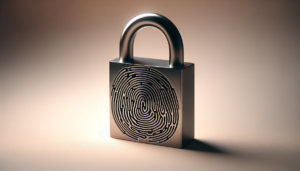Have you ever imagined a world where technology could transport you to a serene beach or a peaceful forest, all without leaving your living room? This is not just a dream; it’s the reality offered by Virtual Reality (VR). As I delve into the health and wellness applications of VR, I find myself fascinated by its potential to enhance both physical and mental well-being.
Understanding Virtual Reality
To appreciate the influence of Virtual Reality on health and wellness, it’s essential to understand what VR truly is. It’s an immersive simulation of a 3D environment, often experienced through a headset that generates a sensory experience. I can almost feel the thrill of being in a different place. This technology allows users to engage with virtual environments in ways that traditional methods cannot. Imagine feeling the rush of wind on your face as you hike up a virtual mountain—exciting, right?
The Role of VR in Health and Wellness
As I look at the various sectors, health and wellness stand out as fascinating fields for VR applications. It isn’t just about entertainment anymore; the potential for VR to improve well-being is significant. Let’s break down some of the standout applications.
Stress Relief and Relaxation
One of the most sought-after applications of VR is in stress relief. Life can get overwhelming at times, and I often find myself needing a break. With VR, I can escape to serene environments designed specifically to evoke calm and tranquility. For instance, guided meditations in virtual settings can help reduce anxiety and promote relaxation.
Imagine embarking on a calming journey through a lush forest or watching the waves gently lap against a beach. These immersive experiences can trigger that “ahh” feeling I crave when needing to unwind. Research has even shown that such simulations can lower cortisol levels, the stress hormone, significantly enhancing mental wellness.
Pain Management
Managing pain is another area where I find virtual reality holds immense promise. Many individuals, including myself, might be familiar with the struggles of chronic pain. Using VR, healthcare providers have found that immersing patients in engaging environments can distract from pain and discomfort.
The concept known as “distraction therapy” is effective. For instance, patients can embark on virtual journeys, such as exploring coral reefs or floating in space, which momentarily takes their minds off the pain they feel. By redirecting focus, I can better manage my responses to pain, making the healing journey much more bearable.
Therapy and Mental Health
The realm of mental health is one where VR shines brightly. As I think about counseling and therapy, traditional methods sometimes feel limited. With VR, therapists can create controlled environments that help patients confront fears or anxieties in a safe space.
For instance, exposure therapy can be revolutionized with VR. If someone has a fear of heights, I can virtually ascend to high places without the risks of real-life exposure. Such controlled settings allow individuals to face their fears gradually and comfortably, leading to powerful breakthroughs in their therapy sessions.
Physical Rehabilitation
When considering physical rehabilitation, I see VR as a bridge that can empower users to engage in their recovery. In physical therapy, VR can introduce interactive exercises that make rehabilitation enjoyable rather than tedious. Combining physical movement with motivating virtual environments encourages I to stay committed to recovery.
Cognitive Function and Aging
As I grow older, I realize the importance of maintaining cognitive function. VR applications have emerged as beneficial tools in cognitive training programs. Engaging in virtual environments that challenge the brain can significantly improve memory, attention, and problem-solving skills.
In particular, VR can help older adults experience cognitive exercises in a fun and stimulating way. The immersive nature of VR keeps the mind active, almost like a game, which can be particularly enticing for those who may struggle with traditional methods.
Fitness and Exercise
VR isn’t just about meditation and mental wellness; it can also transform the way I approach fitness. With the advent of VR workout programs, I can engage in exhilarating virtual fitness experiences, from boxing to dancing. The fusion of gaming and fitness allows me to enjoy workouts I might otherwise find monotonous.
I can find myself trekking through a digital landscape while working up a sweat, making fitness feel less like a chore and more like an adventure. The immersive aspect of VR can increase motivation and adherence to exercise regimens, which is often a hurdle we face.
Sleep Improvement
Sleep is a crucial component of health, and I know I’m not alone in facing sleepless nights. VR can play a role in improving sleep quality. Guided sleep meditations and calming virtual environments help signal to my brain that it’s time to wind down.
The integration of soothing visuals and sounds can create a serene atmosphere that enhances relaxation. Research indicates that engaging with calming VR experiences before sleep can help in reducing insomnia and improving overall sleep quality.
Social Connections and Support
In times where isolation can be prevalent, I appreciate how VR can foster social connections. Virtual environments allow individuals to connect with friends or support groups, providing a sense of community.
Imagine chatting with friends while overlooking a stunning sunset in a virtual world, rather than just a videoconferencing app where you can’t shake off that feeling of distance. This social engagement can combat loneliness and strengthen relationships, which is essential for mental health.
Customized Wellness Programs
One of the exciting benefits of VR is its ability to tailor experiences according to my needs. Healthcare providers can develop customized wellness programs to address specific issues, be it stress, pain management, or even cognitive enhancement.
With VR, providers can adapt environments and scenarios to suit individual preferences. This personalization can make the experience more relatable and effective for me as I work toward my health goals.
Real-World Applications of VR in Health and Wellness
So, how is VR being utilized in real-world health settings? I look at several notable applications and companies that are pioneering this innovative technology.
Virtual Reality Exposure Therapy (VRET)
VRET has become a significant aspect of contemporary psychotherapy. For those like me who grapple with phobias, PTSD, or anxiety disorders, VRET offers a controlled platform for gradual exposure. Practitioners create realistic scenarios that allow me to face my fears while being supported by trained professionals.
For example, if someone fears public speaking, they can practice in a virtual auditorium with an audience. This exposure, even in a simulated environment, helps build resilience in handling anxiety-provoking situations.
Mindfulness and Meditation Apps
Numerous apps have emerged that focus on mindfulness and meditation using VR technology. I can choose guided sessions that transport me to tranquil landscapes while engaging in mindfulness exercises. Through these apps, I can learn to manage stress and improve overall mental health more effectively.
A few popular apps include:
| App Name | Features |
|---|---|
| Oculus Venues | Social VR experiences for group mindfulness |
| Guided Meditation VR | Various guided meditations in beautiful settings |
| TRIPP | Interactive mindfulness exercises and journeys |
Physical Rehabilitation Programs
VR is reshaping physical rehabilitation for those recovering from injuries or surgeries. Companies like VR Therapy Solutions are at the forefront, offering immersive programs that guide users through rehabilitation exercises in a fun way.
These programs can be tracked and adjusted based on progress, which allows healthcare providers to monitor improvement actively. For me, combining motivation with rehabilitation makes the process much more enjoyable.
Research and Development
Ongoing research is crucial to understanding the full potential of VR in health and wellness. Institutions worldwide are conducting studies on various applications, from pain management to cognitive training. Participating in such research can reveal new ways VR can be integrated into daily health practices.
For instance, many universities are studying the impact of VR on chronic pain management to identify the most effective scenarios for therapy. I find the commitment to research truly inspiring as it paves the way for innovation in healthcare.
The Future of VR in Health and Wellness
As I ponder the future, I envision Virtual Reality becoming increasingly integrated into healthcare and wellness practices. With technological advancements, the immersive experiences are likely to improve, making them even more impactful for users like me.
Ethical Considerations
As with evolving technologies, ethical considerations are essential. Ensuring patient safety and proper training for practitioners is paramount. As exciting as VR can be, its application in health must be approached responsibly to avoid potential pitfalls.
Privacy is another concern. Developers must ensure that users’ data is secure, especially given the sensitive nature of health information. I would want to feel comfortable using a VR app knowing that my privacy is protected.
Cost and Accessibility
Currently, the cost of developing and maintaining VR technology can be hefty, which could limit access for some individuals. As VR continues to grow, I hope to see prices decrease and accessibility increase, allowing more people to benefit from this innovation.
Ongoing Research
The realm of health and wellness applications of VR is still developing. Research in this field is ongoing, and I anticipate that new therapeutic uses will emerge. Continuous exploration will unveil new potential benefits, ensuring VR remains relevant and effective in enhancing our health.
Embracing VR in My Life
As I reflect on how Virtual Reality can fit into my lifestyle, I feel encouraged by the possibilities. Adopting VR into my health and wellness routine can be a fun and transformative approach. Making wellness a priority is vital, and now I have additional tools to help me along the journey.
I’m excited about the prospect of integrating VR for relaxation, exercise, and perhaps even therapeutic experiences. While not a substitute for traditional medical practices, it’s exhilarating to view VR as a complementary tool in the quest for well-being.
In embracing these innovations, I can evolve my wellness journey into something adaptable and enjoyable. With VR’s power, it feels like the world is ahead of me, ready to be discovered and experienced in ways I never thought possible. There’s a healthful adventure waiting, and I’m more than ready to step into it.
As I move forward, I encourage anyone interested to research and try these applications. While technology is not a magic pill for all health issues, incorporating VR thoughtfully may guide me toward improved mental and physical wellness. It’s an exciting time to give it a try and see how it can enhance our lives for the better!






